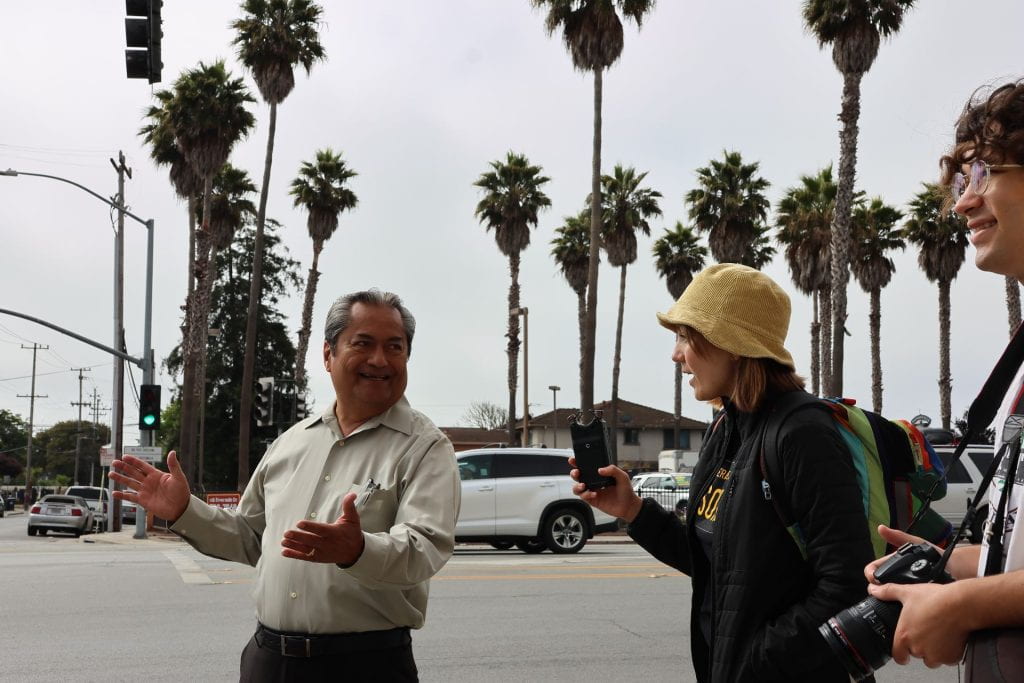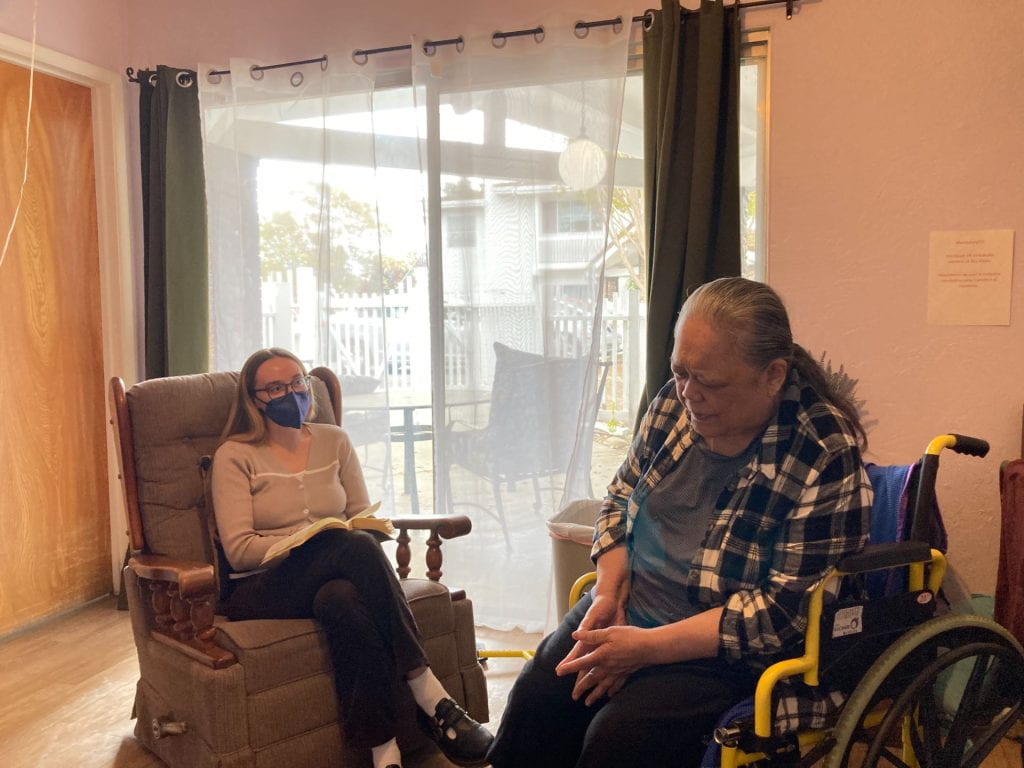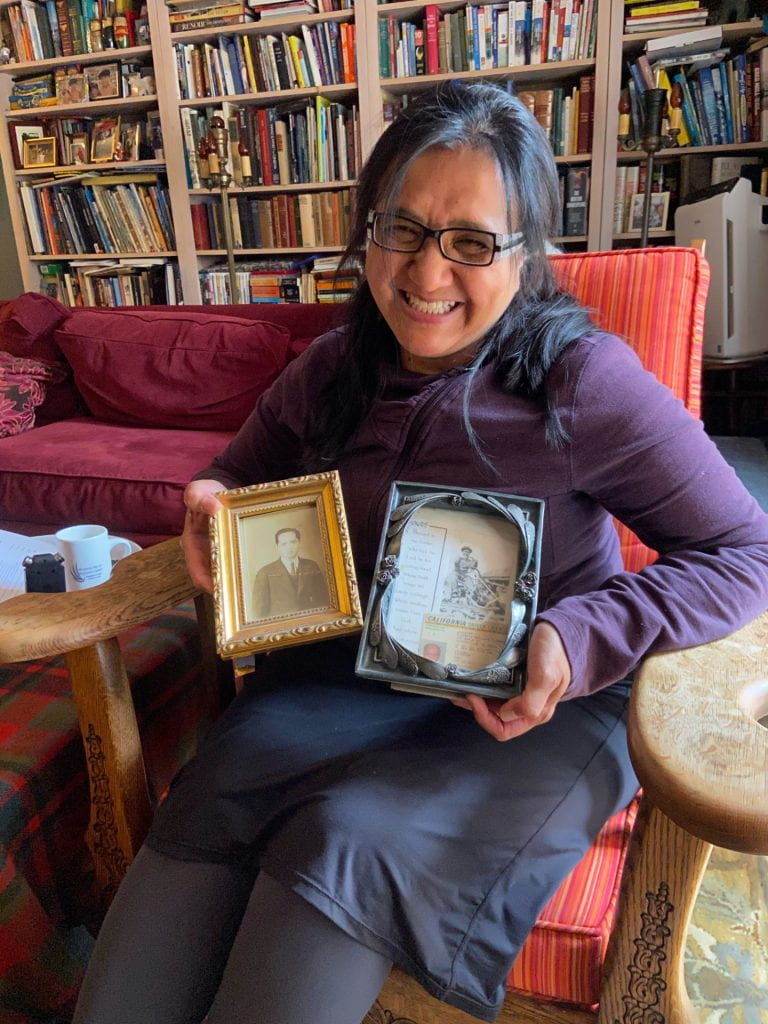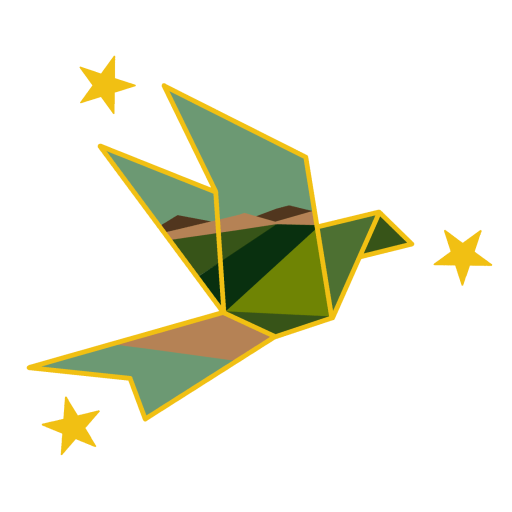Introduction:
In response to demand from local K-12 educators, we created a lesson plan designed to introduce students to oral history through the Watsonville is in the Heart oral history collection. Two primary objectives guided the creation of this lesson plan. First, we aim to increase the accessibility of oral history methods and archival collections for educators and students. Second, we seek to empower students to learn about their families and communities through hands-on engagement with oral history research.
The lesson plan includes resources and activities created by the WIITH team to incorporate best practices outlined by professional organizations like the Oral History Association (OHA) and The Institute for Oral History at Baylor University. Our resources and activities are also informed by the unique methods and strategies we developed while collecting interviews with members of the Pajaro Valley Filipino American community.
The WIITH Oral History Lesson Plan is designed for use in high school classrooms. However, it could also be adopted by middle or elementary school educators. Due to its focus on engaging students in family and community research, the lesson plan is particularly useful for educators who utilize community-responsive and ethnic studies teaching frameworks.

The lesson plan contains four sections:
- What is Oral History?: This section outlines methods and ethical considerations that shape oral history as a field and interview practice. It includes a “Prior Knowledge Check” discussion-based activity designed to introduce students to the differences between oral history interviews and other genres of interviews.
- Watsonville is in the Heart Oral History Listening Activity: This section provides students with oral history interview excerpts from the WIITH collection that demonstrate interview practices. It provides context and questions to guide students as they listen and a worksheet designed to promote reflection on oral history methods and strategies.
- Conduct your own Oral History Interview: This section includes a step-by-step guide for students to use as they conduct their own oral history interviews.
- Post-interview Reflections: This section includes two activities designed to encourage students to reflect on their own oral history interviews. First, it provides discussion questions that focus on self-reflection of their interview process. Second, it includes a worksheet outlining a peer-feedback activity.
WIITH Oral History Lesson Plan Learning Outcomes:
After completing the WIITH oral history lesson plan, students will be able to . . .
- Discuss the importance of oral history as a method of historical documentation
- Reflect on best practices utilized by oral historians and apply these strategies during their own interviews
- Conduct one 45- 60 minute oral history interview with a family and/or community member
Guiding Questions:
- How is oral history a unique interviewing practice? What are the differences between oral history and other genres of interviews?
- What are the strengths of oral history as a method of historical documentation?
- How do oral history interviews expand what we know about historical events?
Section 1: What is Oral History?
Prior Knowledge Check Activity:
Before introducing students to oral history methods and practices, begin with a prior knowledge check.
This activity assesses students’ pre-existing knowledge. It will help gather information about what students already know or think they know about oral history and encourage them to make educated guesses about what oral history entails. We suggest conducting this activity as a discussion with the entire class. Students’ ideas can be written on a whiteboard in the form of a list or as a Mind Map.
Prior Knowledge Check Questions:
- Have you ever listened to an interview? What types of interviews have you listened to?
- In your opinion, what are the qualities of a good interview? What makes them interesting and/or informative?
- What comes to mind when you think about the phrase “oral history?” What guesses do you have about what it entails?
Introduction to Oral History:
Oral history is a historical research method and a field of study that centers the collection and preservation of individuals’ and communities’ stories and memories. During an oral history interview, an interviewer conducts a recorded interview with an individual (commonly referred to as a narrator) who has knowledge and experiences related to past events, historical periods, or topics of interest.
During the 1960s, 70s, and 80s, ethnic studies scholars and activists used oral history to document the voices and experiences of groups who were often left out of traditional historical narratives that had commonly centered white, male, and/or heteronormative perspectives. Today, oral historians continue to use oral history in order to preserve perspectives that enrich historical knowledge and illuminate stories that have been overlooked.

Oral History Principles
- Oral history focuses on peoples’ experiences of history in order to gain a richer understanding of the past. Oral historians seek to situate narrators’ experiences within larger historical contexts.
- Oral history interviews are co-created. This means that they are created through dynamic collaboration between the interviewer and the narrator. The interviewer asks questions based on thoughtful planning and preliminary research. The narrator directs the interview in order to focus on what they think is important and what they are comfortable sharing. The interviewer also asks questions that prompt the narrator to analyze and reflect on their experiences.
- Oral history is grounded in ethical values that respect narrators’ and their communities’ perspectives and ways of knowing. Oral historians are committed to receiving ongoing consent in order to protect narrators’ safety and ensure that they maintain control over their stories. This means that narrators sign a consent form in which they agree to the parameters of an interview and its future uses before an interview is conducted. They are able to review, edit, or withdraw their interview before it is made publicly accessible. Narrators are also ensured the right to remove their interview from its public repository at any time in the future.
Strengths of Oral History as a Research Method and Interview Practice:
- Documents stories and experiences that are often overlooked or lesser known
- Allows for collaboration between the interviewer and the narrator
- Encourages narrators to analyze their experiences in their own words
- Aim to be Inclusive of diverse perspectives and world views
- Commits to an ethical process of ongoing consent
Types of Oral History
There are two types of oral history— life histories and topical interviews. Life history interviews seek to document a narrator’s entire life. As a result, oral historians conduct multiple interviews with a narrator when collecting a life history. Topical interviews are focused on specific topics, events, or themes. They have a more narrow scope and can be completed through one or two sessions.
The WIITH Oral History Project conducts topical interviews with members of the Pajaro Valley Filipino American community. Our interviews are focused on topics related to migration, labor, ethnic, racial, and gender dynamics, and community formation.
Oral History Best Practices
Below are five practices that are central to oral history. The Conduct your own Oral History Interview Guide provides more strategies and information about these and other interview practices.
- Oral historians must commit to an ethical process that respects and protects narrators and their communities. Most importantly, oral historians should gain informed and ongoing consent from the narrator before conducting the interview. Interviewers should clearly communicate the goals of their oral history project, future uses of the interview, and the potential risks of participating in an interview, such as personal information being shared with a public audience. Oral historians communicate to narrators that they have the right to choose not to answer questions during the interview. They also provide narrators with the opportunity to review and edit the interview recording prior to making it public.
- When selecting narrators to interview, oral historians should seek out individuals with diverse backgrounds and experiences in order to provide rich and multi-faceted perspectives of topics and historical events.
- Interviewers must come to their interviews well-prepared. They should conduct preliminary research about their narrator and topics. Based on their research, interviewers should create a guide or roadmap that lists the topics they will ask their narrator about. They must also practice using necessary equipment, such as a recorder, microphone, or camera, before the interview in order to avoid technical difficulties.
- Interviewers should find a quiet and comfortable place to conduct the interview. They should also provide the opportunity to take breaks during the interview and ensure that the interview does not run too long.
- During the interview, oral historians use their guide or roadmap to ask open-ended questions that allow the narrator to direct the interview and prompt them to share detailed memories. They ask follow-up questions in order to gain more information or clarification about stories a narrator shares. Interviewers listen actively to their narrator. This entails making direct eye contact, providing feedback by nodding or through other short responses, and refraining from taking notes or checking devices.
Section 2: Watsonville is in the Heart Oral History Listening Activity
Introduction to the WIITH Oral History Collection:

The WIITH Oral History Project documents Filipino American experiences in the Pajaro Valley and greater Santa Cruz County from the early 20th century to the present. The oral history interviews are focused on memories of migration, labor, leisure, racial, ethnic, and gender dynamics, and community formation. Watsonville is in the Heart interviewers strive to be facilitators of collaborative conversations. We place our narrators at the center of the project, providing them with the space to direct their interviews towards topics and memories they feel are important and are comfortable sharing. We aim to represent multiple perspectives by selecting narrators from diverse backgrounds and prompting them to reflect and analyze their experiences. We accomplish these goals by adhering to oral history methods.
Listening Activity Directions:
This activity provides three excerpts from Watsonville is in the Heart oral history interviews that exemplify best practices practices and strategies.
Students will listen to all three of WIITH oral history excerpts: “Eva Alminiana Monroe interviewed by Christina Ayson Plank Part 1 of 2,” “Antoinette DeOcampo-Lechtenberg interviewed by Olivia Sawi,” and “Daniel “Dan” Kerubin Fallorina interviewed by Meleia Simon-Reynolds.” After listening to the excerpts, students will complete the Listening Activity Reflection Worksheet designed to promote reflection on oral history methods and strategies.
While listening to the example interview excerpts think about the following questions:
- Who is the interviewer?
- Who is the narrator?
- What topics are discussed?
- How does the interviewer ask questions? How does the narrator respond?
- What parts of the interview stood out to you?
WIITH Oral History Interview Examples:
- “Eva Alminiana Monroe interviewed by Christina Ayson Plank Part 1 of 2” (00:00 – 04:47) This excerpt exemplifies how oral historians begin an interview by recording a “lead-in.” The interviewer, Christina Ayson Plank, states her name, the narrator’s name, the date, location, and time of the interview for the record. WIITH interviewers structure their interviews by chronological order in order to draw out a clear and detailed timeline of the narrators’ family history. This excerpt demonstrates this practice. The narrator, Eva Alminiana Monroe, begins by sharing when she was born and information about her siblings. She also discusses the circumstances of her father’s and uncle’s immigration to the United States from the Philippines. Christina allows Eva to direct the conversation from one topic to the next while asking follow-up questions to ensure clarity.
- “Antoinette DeOcampo-Lechtenberg interviewed by Olivia Sawi” (1:37:01 – 1:44:41) This excerpt demonstrates the ways in which oral history interviewers ask open-ended questions and how they prompt the narrator to give more descriptive answers. At the end of their interview, the interviewer, Olivia Sawi, asks the narrator, Antoinette DeOcampo-Lechtenberg, if there is anything she wishes to share that has not yet been discussed. In response, Antoinette shares detailed memories of her childhood including a story about fishing and crabbing with her uncles and discusses places where she felt most comfortable while growing-up.
- “Daniel “Dan” Kerubin Fallorina interviewed by Meleia Simon-Reynolds” (28:47 – 39:25) This excerpt also exemplifies interview strategies interviewers use to prompt the narrators to be more descriptive. The interviewer, Meleia Simon-Reynolds, asks the narrator to describe how the landscape looked visually and to discuss a typical day in his life. The narrator, Daniel “Dan” Kerubin Fallorina, describes his memories of Watsonville labor camps and agricultural fields in great detail. He describes memories of his parents’ agricultural labor and playing in the fields with his brother.
Section 3: Conduct your own Oral History Interview
After completing Sections 1 and 2, students will be ready to apply what they have learned by conducting their own oral history interview. Students should be encouraged to seek out family or community narrators who have knowledge of a topic or event they are interested in learning more about. Depending on course learning objectives, instructors may want to provide requirements for the topical focus of oral history interviews and choice of narrator.
Our team created the Conduct your own Oral History Interview Guide to help students navigate the interview process including pre- and post-interview practices. The guide is intentionally open-ended in order to ensure that it can be adapted to be used in various classroom contexts.
Note on oral history equipment: Most oral historians use digital recording devices and microphones in order to achieve the best sound quality for their interviews. However, expensive equipment is not necessary. We recommend that students make use of the voice recording capabilities on smartphones, tablets, and or laptops in order to record in-person oral history interviews. Interviews can also be effectively conducted and recorded via Zoom.
Section 4: Post-interview Reflections
After students complete their interviews, it is necessary to listen and reflect on their process.
We created two activities to guide their reflections. The first is a set of questions designed to promote self-reflection. Students should answer the questions individually after listening back to their interviews. The second activity is the Oral History Peer Feedback Worksheet. It can be completed in groups of two to three students. The peer feedback activity requires students to listen to each others’ interviews. It asks them to provide suggestions for how peers can improve in the future and asks students to discuss their peers’ effective interview practices.
Self-Reflection Questions:
After listening to your oral history interview, reflect on the following questions:
- What was your favorite part of the interview? Why did this part of the interview stand out most?
- What are your strengths as an interviewer? Why are your strategies effective?
- Are there any “sticky” points (moments that were uncomfortable, unexpected, and/or unclear) in your interview? If so, what did you do when you encountered these moments during your interview?
- What interviewing practices would you like to improve on in the future? How will you improve?
- What did you learn from your narrator that you didn’t know before conducting the interview? How does what you learned from your narrator compare with or expand the topics you learn about in classes at school?
Oral History Peer Feedback Activity:
For this activity, students should be placed in groups of two to three. In their groups, they should exchange and listen to each others’ interviews. After listening, each group member should complete an Oral History Peer Feedback Worksheet. The worksheet encourages students to analyze their peers’ interviews and provide constructive feedback. After students complete the Oral History Peer Feedback Worksheet, educators should reconvene the class to share.
